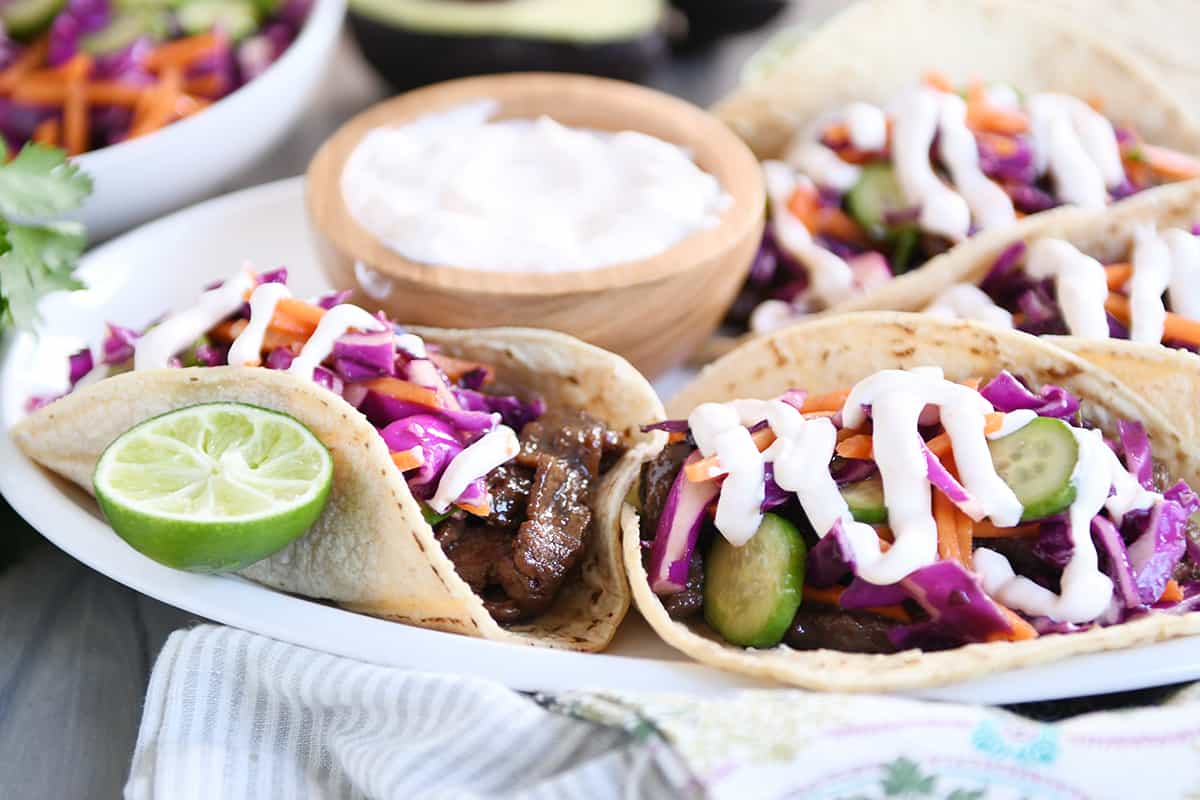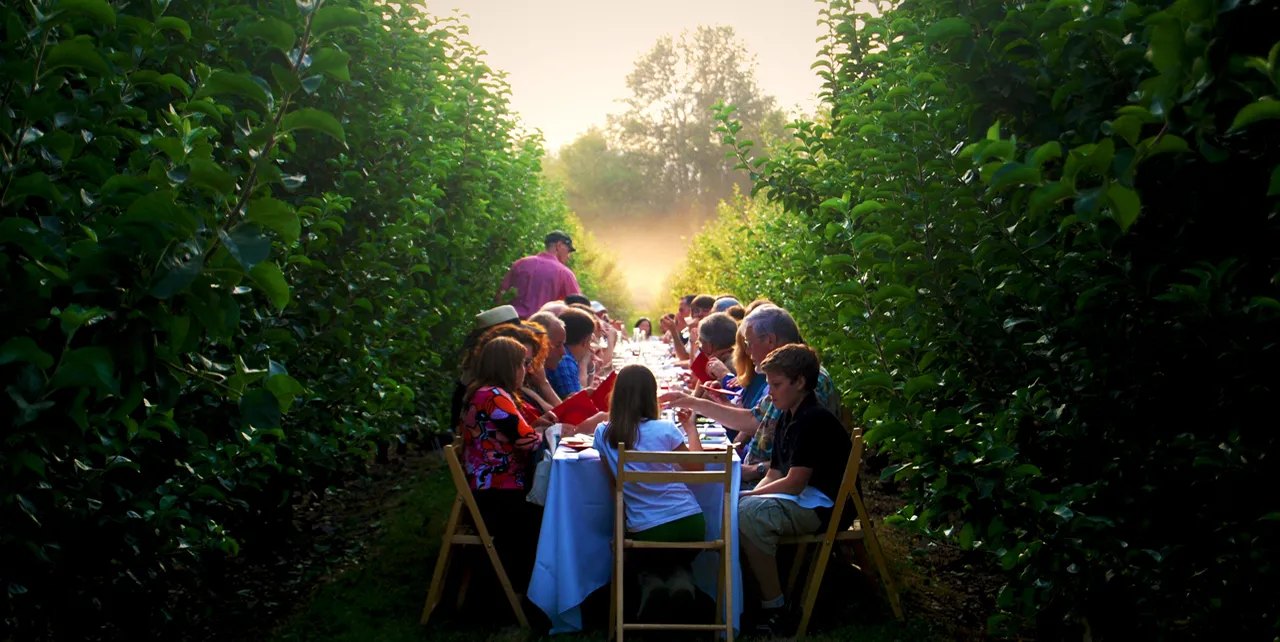
California Cuisine: A Global Fusion of Flavor and Innovation
What's in This Article
California's cuisine is a testament to the state's rich cultural tapestry and agricultural bounty. Known for its innovative spirit, California has become a culinary melting pot where global flavors meet local ingredients. The state's diverse immigrant communities have brought their culinary traditions, creating a vibrant food scene that is constantly evolving.
From the iconic California Roll to the inventive Korean BBQ tacos found throughout California, the state's cuisine is a celebration of diversity and creativity. The state's favorable climate and fertile land provide an abundance of fresh produce, seafood, and wine, making it a haven for food enthusiasts.
As highlighted in recent studies, California's culinary landscape is shaped by its climate, diverse population, and innovative spirit. This blog post will explore the key elements that define California cuisine, including its global influences, farm-to-table movement, and renowned wine regions. We will delve into how these factors contribute to the state's reputation as a hub for culinary innovation.
Join us as we embark on a flavorful journey through California's unique culinary landscape, where global flavors and local ingredients come together to create a truly exceptional dining experience.

California's culinary landscape reflects its cultural diversity with dishes from around the world reimagined with local ingredients
Global Influences on California Cuisine
California's cuisine is a reflection of its diverse population, with influences from around the world. The state's history of immigration has brought a rich tapestry of culinary traditions, each adding its unique flavor to the mix. From Mexican street food to Asian fusion dishes, California's food scene is a melting pot of global influences.
This diversity is evident in the state's vibrant food markets, where one can find ingredients and dishes from every corner of the globe. The fusion of different culinary traditions has led to the creation of iconic dishes like the California Roll, which combines Japanese sushi techniques with local ingredients like avocado.
This blend of global flavors and local produce is what makes California cuisine so unique and exciting. Restaurants throughout the state embrace these diverse influences, creating menus that showcase the best of many culinary worlds.
The Role of Immigration
Immigration has played a significant role in shaping California's culinary landscape. The state has long been a destination for immigrants from around the world, each bringing their culinary traditions and flavors. Mexican, Chinese, Japanese, and Italian immigrants, among others, have all contributed to the state's diverse food scene.
This influx of cultures has led to the creation of fusion dishes that combine elements from different cuisines. For example, Korean BBQ tacos are a popular street food that blends Korean and Mexican flavors, showcasing the innovative spirit of California's chefs.
The state's diverse population continues to inspire new culinary creations, making California a hub for food innovation. In coastal cities like Los Angeles and San Francisco, you'll find neighborhoods dedicated to specific cuisines, from Little Tokyo to Koreatown, each contributing to the state's rich culinary mosaic.
Fusion Cuisine: A California Specialty
Fusion cuisine is a hallmark of California's culinary scene, where chefs experiment with combining flavors and techniques from different cultures. This approach has led to the creation of unique dishes that are both innovative and delicious. The California Roll is a prime example of this fusion, combining traditional Japanese sushi with local ingredients like avocado and crab.
This dish has become a staple in sushi restaurants worldwide, highlighting California's influence on global cuisine. The state's chefs continue to push the boundaries of fusion cuisine, creating dishes that are both familiar and exotic.
This spirit of experimentation and creativity is what sets California cuisine apart from other culinary traditions. Restaurants like those found in Ojai's vibrant culinary scene showcase this inventive approach, where chefs aren't afraid to blend techniques and flavors from different cultures to create something entirely new.

Korean BBQ tacos exemplify California's innovative approach to blending culinary traditions
The Farm-to-Table Movement
California is at the forefront of the farm-to-table movement, which emphasizes the use of fresh, locally sourced ingredients. The state's favorable climate and fertile land make it an ideal location for agriculture, providing an abundance of fresh produce year-round. This focus on local ingredients has led to a culinary culture that values sustainability and quality.
Restaurants across the state are committed to sourcing their ingredients from local farms, ensuring that their dishes are both fresh and flavorful. Many establishments proudly list the farms they source from on their menus, creating a direct connection between diners and producers.
This movement has also inspired home cooks to seek out local produce, supporting their communities and reducing their carbon footprint. Farmers' markets have become weekend destinations throughout California, where consumers can connect directly with the people who grow their food.
Sustainability and Local Sourcing
Sustainability is a key component of the farm-to-table movement, with a focus on reducing the environmental impact of food production. By sourcing ingredients locally, restaurants can reduce their carbon footprint and support local farmers. This approach also ensures that ingredients are fresh and in season, resulting in dishes that are both flavorful and nutritious.
Many California chefs are passionate about sustainability, incorporating eco-friendly practices into their kitchens. From composting food waste to using renewable energy, these chefs are committed to reducing their environmental impact.
This commitment to sustainability extends beyond the restaurant industry, with consumers increasingly seeking out local and organic produce. The farm-to-table movement has become a defining feature of California cuisine, promoting a more sustainable and responsible approach to food that respects both the environment and the people who produce our food.
The Impact on Culinary Innovation
The farm-to-table movement has had a significant impact on culinary innovation in California. By focusing on fresh, local ingredients, chefs are encouraged to experiment with new flavors and techniques. This approach has led to the creation of dishes that are both innovative and deeply rooted in local traditions.
The emphasis on quality and sustainability has also inspired chefs to explore new ways of preparing and presenting food. Techniques like fermentation and preservation have been revived, allowing chefs to showcase seasonal ingredients year-round while reducing waste.
This spirit of innovation is evident in the state's vibrant food scene, where new restaurants and food concepts are constantly emerging. The farm-to-table movement has not only transformed the way Californians eat but has also influenced culinary trends worldwide, establishing California as a global leader in sustainable dining practices.

California's year-round growing season provides chefs with an abundance of fresh, local ingredients
California's Iconic Wine Regions
California is home to some of the world's most renowned wine regions, producing a diverse range of wines that complement the state's cuisine. The state's varied climate and geography provide ideal conditions for growing a wide variety of grapes, resulting in wines that are both diverse and distinctive.
From the lush vineyards of Napa Valley to the coastal wineries of Santa Barbara, California's wine regions offer something for every palate. These wines are often featured in the state's restaurants, where they are paired with dishes that highlight their unique flavors.
The combination of world-class wines and innovative cuisine makes California a top destination for food and wine enthusiasts. Wine tourism has become a significant industry, with millions of visitors each year exploring the state's wineries and tasting rooms across California.
Napa Valley: A Wine Lover's Paradise
Napa Valley is one of California's most famous wine regions, known for its picturesque vineyards and world-class wines. The region's Mediterranean climate and rich soil provide ideal conditions for growing a variety of grapes, including Cabernet Sauvignon, Chardonnay, and Merlot.
Napa Valley's wineries are renowned for their commitment to quality, producing wines that are both complex and balanced. Visitors to the region can enjoy wine tastings, tours, and gourmet dining experiences, making it a must-visit destination for wine lovers.
Napa Valley's wines are often featured in California's top restaurants, where they are paired with dishes that complement their unique flavors. The region's reputation for excellence has put California on the global wine map, challenging traditional wine regions in Europe and beyond.
The Diversity of California Wines
California's wine regions are as diverse as the state itself, offering a wide range of wines that reflect the unique characteristics of each area. From the cool-climate wines of Sonoma County to the bold reds of Paso Robles, California's wines are as varied as its landscapes.
This diversity is reflected in the state's cuisine, where wines are often paired with dishes that highlight their distinct flavors. California's winemakers are known for their innovative spirit, experimenting with new grape varieties and winemaking techniques.
This commitment to quality and creativity has made California a leader in the global wine industry, attracting wine enthusiasts from around the world. Beyond the famous regions, emerging areas like Mendocino County and the Sierra Foothills are gaining recognition for their distinctive wines, further expanding the state's impressive viticultural landscape.

Napa Valley's Mediterranean climate creates ideal conditions for growing world-class wine grapes
Culinary Innovation and Future Trends
California's culinary scene is constantly evolving, driven by a spirit of innovation and creativity. The state's chefs are known for pushing the boundaries of traditional cuisine, experimenting with new flavors and techniques. This approach has led to the creation of unique dishes that are both innovative and delicious.
As the state's food scene continues to evolve, new trends are emerging that reflect the changing tastes and preferences of consumers. From plant-based dining to sustainable seafood, California's chefs are at the forefront of culinary innovation, setting trends that influence the global food industry.
The state's commitment to sustainability and quality continues to drive innovation, with chefs and food producers working together to create a more sustainable and equitable food system. This collaborative approach ensures that California will remain a leader in culinary innovation for years to come.
The Rise of Plant-Based Dining
Plant-based dining is a growing trend in California, driven by a focus on health and sustainability. The state's chefs are embracing this trend, creating innovative dishes that showcase the flavors and textures of plant-based ingredients. From gourmet vegan restaurants to plant-based fast food, California's food scene is leading the way in this culinary revolution.
This trend is not only popular among vegans and vegetarians but also among consumers looking to reduce their meat consumption. Many restaurants now offer plant-based options alongside traditional meat dishes, catering to the growing demand for more sustainable and health-conscious dining options.
The rise of plant-based dining reflects a broader shift towards more sustainable and health-conscious eating habits, with California at the forefront of this movement. Innovative meat alternatives developed in the state are now found worldwide, demonstrating California's influence on global food trends.
Sustainable Seafood: A New Frontier
Sustainable seafood is another emerging trend in California's culinary scene, driven by a commitment to preserving the state's marine resources. Chefs are increasingly sourcing their seafood from sustainable fisheries, ensuring that their dishes are both delicious and environmentally responsible.
This approach is reflected in the state's seafood restaurants, where menus often feature locally caught fish and shellfish. Many establishments work directly with small-scale fishers who use sustainable practices, creating a more direct and transparent seafood supply chain.
The focus on sustainability extends beyond the restaurant industry, with consumers becoming more aware of the environmental impact of their food choices. California's commitment to sustainable seafood is setting a new standard for the industry, promoting a more responsible approach to seafood consumption that ensures the health of our oceans for future generations.
Conclusion
California's cuisine is a vibrant fusion of global flavors and local ingredients, shaped by the state's diverse communities and agricultural abundance. From the innovative fusion dishes that define the state's culinary scene to the farm-to-table movement that emphasizes sustainability and quality, California continues to set trends in the global food industry.
The state's renowned wine regions further enhance its culinary reputation, offering a diverse range of wines that complement its cuisine. As California's food scene continues to evolve, new trends are emerging that reflect the changing tastes and preferences of consumers.
The rise of plant-based dining and sustainable seafood are just two examples of how California is leading the way in culinary innovation. As we look to the future, California's commitment to creativity, sustainability, and quality will continue to shape its culinary landscape, inspiring chefs and food enthusiasts around the world.
Whether you're a local or a visitor, California's cuisine offers a unique and unforgettable dining experience that celebrates the best of global flavors and local ingredients. Explore more about California's diverse culinary regions and discover why this state remains at the cutting edge of food innovation.
Frequently Asked Questions
California cuisine is unique because it combines global culinary influences with locally sourced, fresh ingredients. The state's diverse immigrant population has created a fusion of flavors from around the world, while its agricultural abundance provides chefs with exceptional ingredients year-round. This combination, along with an innovative spirit and focus on sustainability, has created a culinary style that emphasizes freshness, flavor, and creativity.
Immigration has been fundamental in shaping California's food landscape. Waves of immigrants from Mexico, Asia, Europe, and beyond have brought their traditional recipes, cooking techniques, and ingredients to the state. This has led to both authentic ethnic cuisine and innovative fusion dishes that blend culinary traditions. Iconic California creations like Korean BBQ tacos, the California Roll, and Baja-style fish tacos all emerged from this cultural blending, making diversity a defining characteristic of the state's food identity.
The farm-to-table movement in California emphasizes sourcing ingredients directly from local farmers and producers, often establishing direct relationships between restaurants and farms. This approach ensures maximum freshness, supports local agriculture, reduces transportation impact, and connects diners more closely with the source of their food. California pioneered this movement due to its year-round growing season and agricultural diversity, with restaurants throughout the state proudly featuring seasonal, local ingredients that showcase the region's bounty.
To experience the best of California wine country, visit diverse regions like Napa, Sonoma, Paso Robles, and Santa Barbara, each offering unique wines and tasting experiences. Plan ahead by making reservations at wineries, especially for smaller, boutique producers. Consider food and wine pairings at wineries with on-site restaurants, and don't miss farmers' markets in wine regions to sample local produce. For the full experience, stay overnight in wine country to enjoy leisurely tastings, vineyard tours, and the beautiful surrounding landscapes. Many regions also offer wine festivals throughout the year that showcase local wines alongside regional cuisine.
Emerging food trends in California include plant-forward cuisine that elevates vegetables to the center of the plate, hyper-local sourcing with restaurants growing their own ingredients, sustainable seafood practices that protect marine ecosystems, technological innovation in food production and delivery, and zero-waste cooking that utilizes every part of ingredients. California continues to lead in inclusive dining experiences that accommodate various dietary preferences and restrictions, while also embracing global influences that bring new techniques and flavors to the state's already diverse culinary landscape.